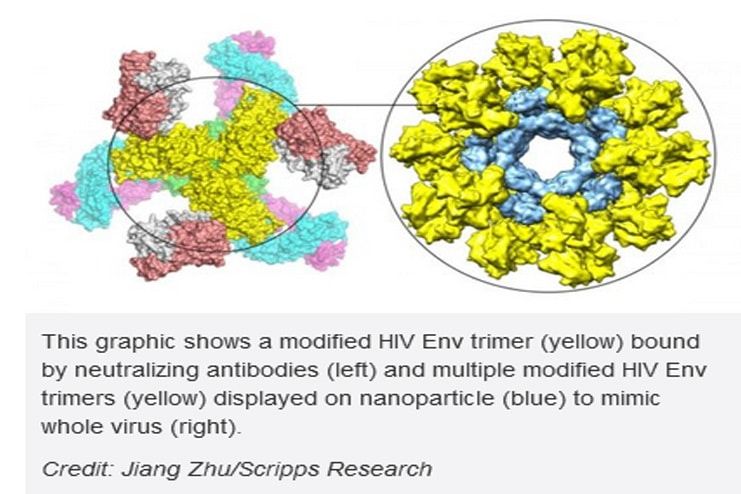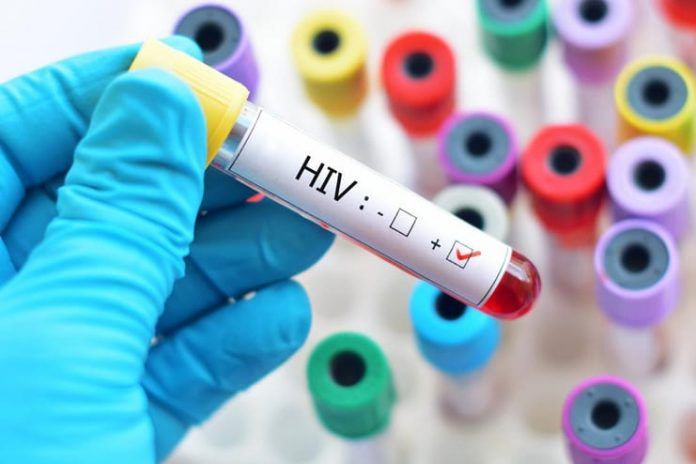Affiliate Disclaimer
Some links in this article are affiliate links. We may earn a small commission if you make a purchase through these links, at no extra cost to you. We only recommend products we find useful to our readersHIV and its surmounting effects on an individual don’t need a separate introduction. With the struggled the scientists and researchers have consistently been facing to develop a potent vaccine against it has been next to impossible with one problem after the other. A new candidate HIV vaccine strategy has been developed which is believed to pave path for a new development in this field.
A new study (R) conducted by the scientists from the Scripps Research Institute has successfully developed a new HIV vaccine strategy completely in correlation to the HIV envelope protein, Env. Prior to this, it has been quite difficult to mould this specific molecule to produce them in the vaccines that would be viable to induce proper immunity against the HIV virus.


The scientists from the Scripps Research Institute were successfully able to stabilize the shape and size of the Env molecule according to their desire. The molecule was mounted on the virus like particles in order to successfully mimic a whole virus. The stabilized Env molecules were found to elicit anti-HIV antibodies in response to the virus in the mice and rabbits. Before administering possible clinical trials, the process is being tested out on monkeys to notice its efficacy.
The principal investigator Jiang Zhu, associate professor in the Department of Integrative Structural and Computation Biology at Scripps Research stated that these new findings might be the answer to every possible query that have been littering every person’s mind since the inception of the deadly HIV virus.
The copies of the Env molecule is believed to study the surface of the HIV in which they primary grab the host cells and gradually break into them to initiate the infection. Owing to this major correspondence, the Env molecule was made the primary factor in the HIV vaccine strategy. Following the study, the researchers hope to inoculate the people with the Env protein or even just mere subunits of the protein in hope that it will stimulate the production of the Env-binding antibodies and prevent the proliferation of the HIV virus upon future exposure.
If the studies on the development of HIV vaccines are to be considered, none of them have been effective enough till date in terms of clinical studies. The introduction of the Env molecule as a mode of vaccination against this deadly virus have been proposed prior to this but no one was successful in rendering the perfect presentation of the Env protein correctly on an infected cell for it to work its magic.
When it comes to the interaction between the HIV virus and the Env protein, it is believed that the protein protrudes out in clusters of three, trimers which are what tend to adopt radical shapes before they end up affecting the cells. What the researchers till now have been unable to achieve is to present these Env trimers in a stable state so that it resembles that of the pre-infection stage.
Zhu further reporting saying that the Env trimer ‘metastability’ has been the primary obstacle that every scientist has been struggling with. While there have little success in successfully stabilizing the trimers for a few strains of the HIV virus, the same hasn’t been effective enough for a generalized approach of the treatment.
Following this struggle, Zhu and his colleagues from the Scripps Research Institute proposed a working model for this problem in a published paper back in 2016. According to the paper, induced modifications in the springy section of the Env, known as the HR1 section can successfully keep the molecule in the pre-infection closed shape.
In this recent study, he and his team have successfully showed that the conclusions drawn back in the paper of 2016 were actually true and effective for the Env trimers from various HIV strains from around the globe. They named this process as the uncleaved prefusion-optimized (UFO) approach helps efficiently yield Env trimers in the stabilized “closed” shape. The surprising thing about this was the fact that this didn’t necessarily require extensive purification, rather quite the opposite.
In their lab, Zhu and his colleagues have already worked and made modifications to over 30-40 Env strains in the various HIV strains. This developed form of “vaccine” was inoculated in the mice and the results that they observed were shocking. Within a matter of just eight weeks, the Env-on-nanoparticles were able to successfully elicit antibodies which were successfully able to neutralize the action of a circulating HIV strain.
Zhu stated that this is possibly the first time that a candidate HIV vaccine strategy has elicited such positive antibody response in the research trials. The similar approach was made on rabbits and the same even elicited stronger responses and that too, quite quickly.
In order to test out its possible administration on clinical trials, further studies are being conducted on 24 different monkeys to witness its efficacy. The studies are being conducted in the National Institutes of Health-sponsored Southwest National Primate Center in San Antonio, Texas.
Zhu and his colleagues have currently licensed their HIV vaccine strategy to Ufovax LLC who is currently sponsoring the research. The CEO of the start-up, Ji Li, mentioned saying that they are currently testing out the two candidate vaccines on the basis of the Env trimers from varying HIV strains. Apart from that, they are also working on a third candidate vaccine which is a cocktail of the three of them and believe that this study is going to pose an amazing breakthrough in the field of HIV vaccine research since the past 30 years.































